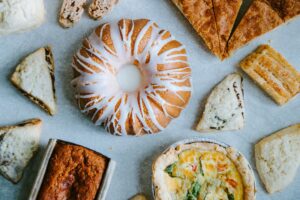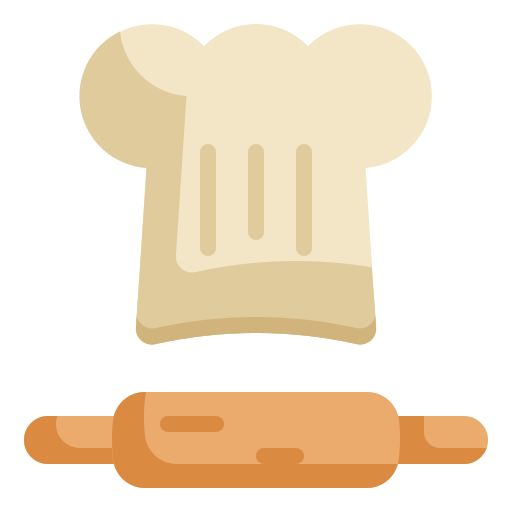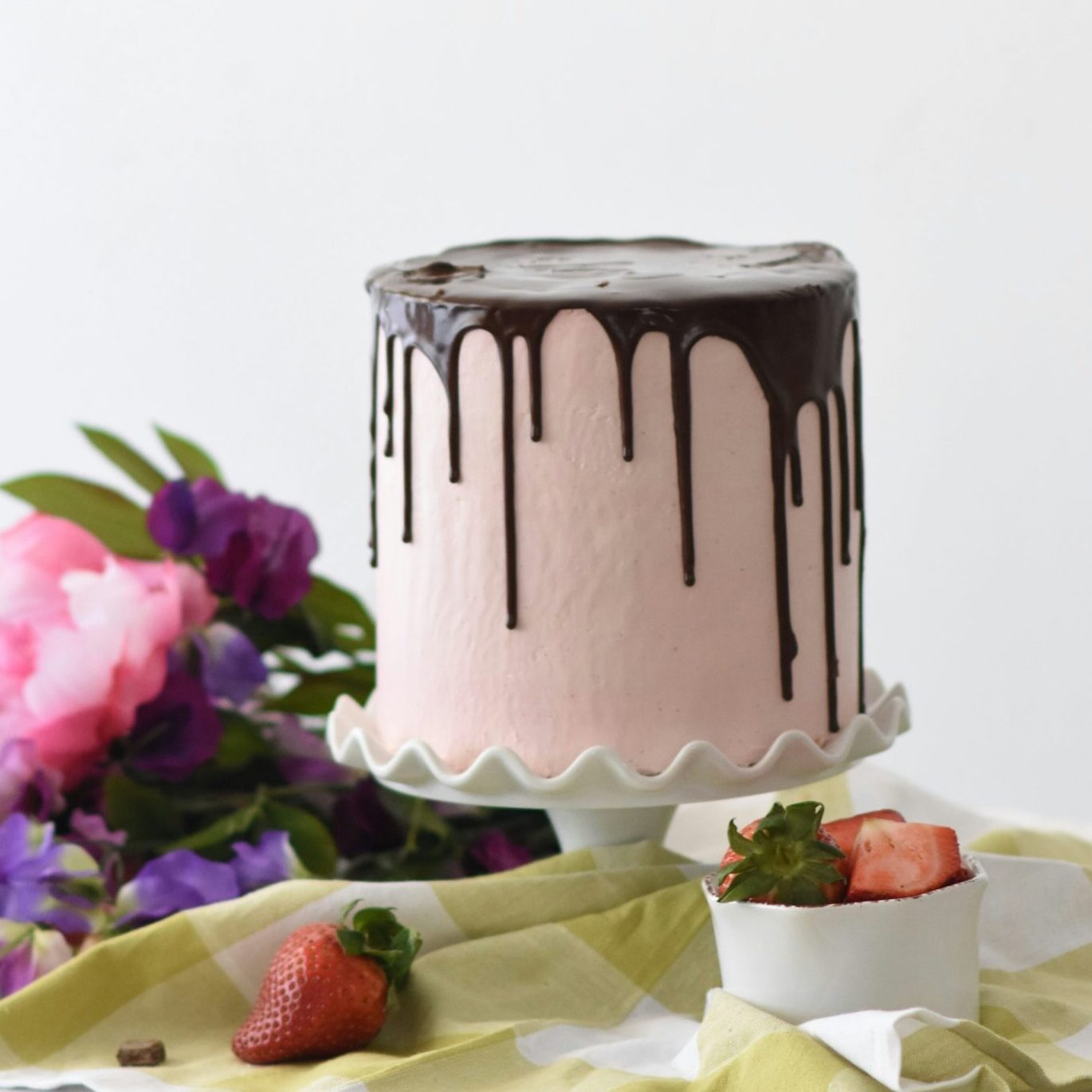Cakes and Pastries: A Sweet Symphony of Flavor, Art, and Tradition
cakes and pastries have become beloved staples of culinary indulgence across the globe. These baked delights are more than just food—they are expressions of artistry, heritage, emotion, and joy. Their richness in flavor and presentation has earned them a prominent place in almost every culture, event, and occasion.

A Glimpse into History
cakes and pastries origins are as rich and layered as the foods themselves. Early versions of cake date back to ancient civilizations, including the Egyptians and Greeks, who made sweetened bread-like treats using honey and nuts. The Romans developed more sophisticated baking methods, incorporating eggs, butter, and yeast.
By the Middle Ages, cakes became a symbol of festivity in Europe, where they were often spiced, fruit-filled, and made to last for long periods. Meanwhile, pastries evolved in tandem, with the Islamic world introducing sugar-based desserts and dough techniques that later influenced European bakers during the Crusades and through trade.
French pastry chefs in the 17th and 18th centuries elevated baking to an art form, perfecting laminated dough, choux pastry, and other techniques that remain the foundation of modern patisserie. The Industrial Revolution later brought technological advances like temperature-regulated ovens and processed ingredients, making cakes and pastries more accessible to the general population.
What Sets Cakes and Pastries Apart?
Although the terms “cake” and “pastry” are often used together, they refer to different types of baked goods.
-
Pastries are made from dough that is richer in fat, giving them a flaky or crumbly texture. Pastry dough may be leavened or unleavened and is used in both sweet and savory preparations. Examples include puff pastry, shortcrust pastry, and phyllo dough.
Understanding this difference is key for aspiring bakers, as each type requires unique techniques and precision to master.
Exploring the World of Cakes
Cakes are as diverse as the people who enjoy them. Here are some of the most popular types around the world:
1. Butter Cake
One of the most common types, butter cake is made with a base of creamed butter and sugar. It includes subcategories such as marble cake, vanilla cake, and pound cake.
2. Sponge Cake
Made with whipped eggs and little or no fat, sponge cakes are airy and delicate. They are ideal for layered cakes like Victoria sponge or Swiss rolls.
3. Chocolate Cake
Rich, indulgent, and universally loved, chocolate cake has become a symbol of comfort and celebration. Variations include devil’s food cake, blackout cake, and flourless chocolate cake.
4. Fruit Cake
Traditionally eaten during holidays and weddings, fruit cake is dense and packed with dried fruits, nuts, and sometimes alcohol for preservation and flavor.
5. Cheesecake
Although not technically a “cake” by batter standards, cheesecake is a creamy, custard-like dessert typically baked on a graham cracker or biscuit crust.
6. Specialty Cakes
These include red velvet cake, carrot cake, hummingbird cake, and mousse cakes, each offering a unique taste experience and a specific cultural or seasonal relevance.
The Art of Pastry Making
Pastries demand a delicate hand and an understanding of dough behavior. Here are some classic and widely loved pastries:
1. Puff Pastry
This laminated dough puffs up during baking to create hundreds of flaky layers. Used for turnovers, vol-au-vents, and mille-feuille.
2. Choux Pastry
Light and airy, choux pastry is used to make éclairs, cream puffs, and profiteroles. Unlike puff pastry, it relies on steam rather than layers of fat to rise.
3. Shortcrust Pastry
With a crumbly and tender texture, shortcrust pastry is commonly used in pies, tarts, and quiches.
4. Phyllo Dough
Paper-thin sheets of dough used to create Mediterranean and Middle Eastern pastries like baklava. It becomes crisp and golden when baked.
5. Danish Pastry
Sweet and enriched with butter and eggs, Danish pastry is often filled with custard, fruit, or cream cheese.
6. Savory Pastries
These include meat pies, sausage rolls, and samosas, proving that pastry can be both a sweet indulgence and a satisfying meal.
The Science Behind the Magic
Baking is as much a science as it is an art. Ingredients interact in specific ways: eggs provide structure and moisture, flour forms gluten which holds everything together, and fats contribute to tenderness and richness. Leavening agents like baking powder, yeast, or steam give cakes and pastries their lift and texture.
Temperature control is vital, especially with pastries. For example, keeping butter cold in puff pastry is crucial for creating those distinct layers. Overmixing a cake batter can lead to dense, dry cakes due to excess gluten development.
The importance of accurate measurement, proper mixing techniques, and precise timing cannot be overstated. Even humidity and altitude can affect the outcome of baked goods, which is why professional bakers meticulously monitor their environment.
Tools and Techniques Every Baker Should Know
Baking cakes and pastries requires a unique set of tools and techniques. Some essentials include:
-
Oven Thermometer – Ensures accurate temperature readings.
-
Electric Mixer or Stand Mixer – For consistent mixing of batter or dough.
-
Rolling Pin – A staple for pastry dough preparation.
-
Pastry Cutter and Blender – Helps incorporate butter into flour evenly.
-
Piping Bags and Tips – For decorating cakes and filling pastries.
-
Cooling Racks, Baking Pans, and Molds – Specialized equipment for shape and even cooling.
Mastering techniques like creaming butter and sugar, folding egg whites, blind baking pastry shells, and laminating dough will elevate your baking to a professional level.
Nutritional Considerations
Cakes and pastries are indulgent by nature, modern dietary awareness has led to an evolution in ingredients and recipes.
-
Health-Conscious Baking – Whole grain flours, natural sweeteners like honey or dates, and plant-based alternatives are increasingly popular.
-
Allergy-Friendly Options – Gluten-free flours, nut-free recipes, and dairy-free substitutions make baked goods accessible to a wider audience.
-
Portion Control – Mini cakes, tartlets, and bite-sized pastries offer satisfaction without excessive calorie intake.
Nonetheless, cakes and pastries are best enjoyed in moderation as part of a balanced diet.
Cakes and Pastries – Across Cultures
Different regions have their signature baked treats that reflect local ingredients and cultural practices:
-
France – Croissants, éclairs, and opera cake.
-
Italy – Tiramisu, cannoli, and panettone.
-
Germany – Black Forest cake (Schwarzwälder Kirschtorte) and strudel.
-
Japan – Castella sponge cake and matcha-flavored pastries.
-
Nigeria – Meat pie, chin-chin, and coconut cake.
-
India – Sweets like gujiya (a fried pastry) and barfi often substitute cakes in celebrations.
This global variety showcases how baking is both a universal art and a deeply regional tradition.
Professional Baking vs. Home Baking
Professional bakers work in commercial kitchens with high-end tools and must follow strict health standards and consistency. Their focus includes:
-
Scalability of recipes
-
Cost control
-
Presentation aesthetics
-
Meeting client expectations (e.g., wedding cakes or corporate events)
Home bakers, on the other hand, often bake for joy, family, or small-scale business. Their baking tends to be more experimental, personal, and relaxed. Both types of baking bring value—whether for mass enjoyment or heartfelt homemade flavor.
Tips for Aspiring Bakers
-
Start Simple – Master basic recipes before moving on to complex techniques.
-
Follow the Recipe – Unlike cooking, baking is exact science.
-
Measure Accurately – Use weighing scales for better precision.
-
Practice Patience – Good baking takes time, especially with dough that needs resting or proofing.
-
Keep Learning – Follow baking blogs, attend workshops, and watch tutorials.
Cakes and Pastries – Modern Lifestyle
In the modern lifestyle, stress levels are high, and people often turn to comfort food to cope. Cakes and pastries serve as that comforting indulgence, whether it’s a slice of chocolate cake after a long day or a flaky croissant with morning coffee. The emotional connection people have with these baked goods cannot be overstated.
Thanks to social media, cakes and pastries have become visual sensations. Food bloggers, influencers, and bakers showcase towering drip cakes, artisan bread, and mesmerizing time-lapse videos of pastries rising in the oven. This digital movement inspires millions to explore baking as a hobby or business.
Baking shows like The Great British Bake Off and countless viral TikTok recipes have turned cakes and pastries into pop culture icons. These platforms encourage creativity, home baking, and appreciation for high-quality patisserie. A beautifully made dessert is now a content piece—ready to be photographed, shared, and admired.
Additionally, personalized cake designs have surged in demand. From cartoon-themed birthday cakes to gravity-defying structures, the only limit is imagination.
Cakes and Pastries as a Symbol of Celebration
No birthday, wedding, or major celebration seems complete without a cake. Whether it’s a tiered wedding cake with intricate sugar flowers or a minimalist buttercream design, cakes are at the heart of life’s memorable moments. Pastries, on the other hand, often appear in brunches, high teas, and casual gatherings, offering both visual and gastronomic pleasure.
Conclusion
Cakes and pastries remain among the most beloved and versatile forms of culinary art. From flaky croissants to decadent chocolate cakes, they bring happiness and comfort to people of all ages and backgrounds. Whether you’re baking at home, running a bakery, or simply indulging your sweet tooth, the world of cakes and pastries is full of delicious possibilities.
As both traditional recipes and modern innovations continue to evolve, one thing remains certain: cakes and pastries will always have a cherished place at the heart of our tables and celebrations.

